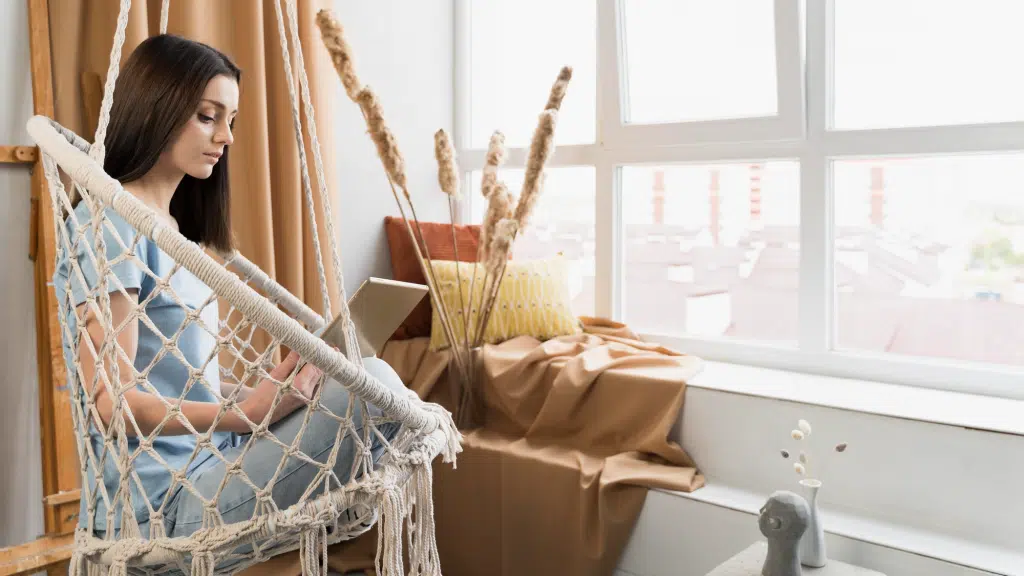Why Clutter-Free Spaces Lead to Clearer Thoughts
Oliver Reed August 4, 2025
Introduction
In a world filled with constant distractions, finding mental clarity can feel like a daunting task. One often-overlooked solution lies in the spaces around us. Clutter-free spaces lead to clearer thoughts by reducing visual noise, lowering stress, and creating an environment that fosters focus and creativity. As we navigate the complexities of 2025, with hybrid work and digital overload, a tidy space can be a powerful tool for mental well-being. This article explores why clutter-free spaces are essential for clear thinking and offers practical steps to create and maintain them.

The Connection Between Clutter and Mental Overload
A cluttered environment—whether it’s a desk piled with papers or a kitchen counter covered in dishes—can overwhelm your brain. Physical clutter competes for your attention, making it harder to concentrate on tasks or relax. This creates a cycle where mental clutter feeds physical clutter, and vice versa, leaving you feeling scattered and stressed.
- Cognitive Overload: A messy space bombards your brain with unnecessary stimuli, reducing your ability to focus.
- Stress and Anxiety: Clutter can trigger feelings of guilt or overwhelm, elevating stress hormones.
- Reduced Productivity: A disorganized environment makes it harder to find what you need, wasting time and energy.
How Clutter-Free Spaces Lead to Clearer Thoughts
1. Reduced Visual Distractions
A tidy space minimizes visual noise, allowing your brain to focus on the task at hand. When your desk or home is free of unnecessary items, your mind can process information more efficiently, leading to better decision-making and problem-solving.
- Why It Works: A clean space directs your attention to what matters, whether it’s a work project or a creative idea.
- Example: A clear desk with only your laptop and a notebook helps you stay focused during a work session.
2. Lower Stress and Improved Mood
Clutter-free spaces create a sense of calm and control. A tidy environment signals to your brain that things are manageable, reducing anxiety and boosting mood. This is especially important in 2025, as many people juggle work-from-home setups and personal responsibilities.
- Why It Works: A clean space reduces the mental load of feeling “behind” or disorganized.
- Pro Tip: Start with one small area, like a drawer, to experience an immediate sense of accomplishment.
3. Enhanced Creativity
A clutter-free space gives your mind room to wander, fostering creative thinking. When your environment is organized, your brain can focus on generating ideas rather than navigating chaos.
- Why It Works: A tidy space encourages mental freedom, allowing your subconscious to make new connections.
- Example: Writers often find inspiration flows more easily in a minimalist workspace with fewer distractions.
4. Improved Focus and Productivity
Organized spaces streamline tasks by making tools and resources easy to access. This reduces friction in your workflow, allowing you to stay in a state of deep focus for longer periods.
- Why It Works: A clutter-free space eliminates the need to search for misplaced items, saving time and mental energy.
- Pro Tip: Keep only essential items on your workspace to maintain a clear line of sight.
Practical Steps to Create Clutter-Free Spaces
Creating a clutter-free environment doesn’t require a complete overhaul. Small, intentional changes can make a big difference. Here’s a step-by-step guide to get started:
1. Declutter One Area at a Time
Focus on a single space, like your desk, kitchen counter, or closet, to avoid feeling overwhelmed. Break the task into manageable chunks.
- How to Do It: Spend 15 minutes sorting items into three categories: keep, donate, or discard.
- Pro Tip: Use a timer to stay focused and make decluttering feel like a quick win.
2. Adopt a “One In, One Out” Rule
To prevent clutter from building up, adopt a rule where every new item brought into your space replaces an old one. This keeps your environment balanced and manageable.
- How to Do It: Before buying a new kitchen gadget or piece of clothing, decide what you’ll remove to make space.
- Example: If you buy a new coffee mug, donate an old one you rarely use.
3. Use Smart Storage Solutions
Invest in storage that maximizes space and keeps items out of sight. Clear containers, shelves, or drawer organizers can make your space feel tidy and functional.
- How to Do It: Use labeled bins for kitchen tools or under-desk organizers for office supplies.
- Pro Tip: Choose storage that matches your aesthetic to make organization feel enjoyable.
4. Create Daily Tidy Habits
Spend 5–10 minutes each day tidying high-use areas, like your desk or kitchen counter. This prevents clutter from piling up and keeps your space conducive to clear thinking.
- How to Do It: Before bed, reset one area by putting items back in their place.
- Example: Clear dishes from the sink or organize papers on your desk.
5. Digitize Where Possible
Paper clutter, like bills or notes, can quickly overwhelm a space. Digitizing documents reduces physical mess and makes information easier to access.
- How to Do It: Scan important documents and store them in a cloud service like Google Drive or Dropbox.
- Pro Tip: Use apps like Evernote to organize digital notes and reduce paper piles.
Maintaining Clutter-Free Spaces for Long-Term Clarity
Once you’ve created a clutter-free space, maintaining it is key. Here are tips to keep your environment tidy and your mind clear:
- Set Weekly Check-Ins: Spend 20 minutes each week reviewing your spaces and addressing any new clutter.
- Limit Sentimental Items: Keep only a few meaningful items to avoid emotional clutter buildup.
- Involve Others: If you share your space, encourage housemates or family to adopt similar habits.
- Reassess Regularly: Every few months, evaluate whether your spaces still serve your needs and adjust as necessary.
Overcoming Common Decluttering Challenges
- Challenge: Feeling attached to items.
Solution: Take photos of sentimental items before letting them go to preserve memories without the clutter. - Challenge: Lack of time to declutter.
Solution: Start with 5-minute sessions and focus on high-impact areas like your workspace. - Challenge: Clutter creeping back.
Solution: Establish daily tidy habits and stick to the “one in, one out” rule.
The Bigger Picture: Clutter-Free Living in 2025
In 2025, as remote work and digital tools dominate, a clutter-free space is more than a luxury—it’s a necessity for mental clarity. With hybrid schedules and constant notifications, a tidy environment acts as a sanctuary for focus and creativity. By intentionally designing your spaces, you create a foundation for clearer thoughts, better productivity, and a calmer mind.
Conclusion: Clear Your Space, Clear Your Mind
Clutter-free spaces lead to clearer thoughts by reducing distractions, lowering stress, and fostering creativity. By taking small, deliberate steps to declutter and organize, you can transform your environment into a catalyst for focus and well-being. Start with one area, adopt simple habits, and watch how a tidy space unlocks mental clarity. In a world full of noise, a clutter-free space is your secret weapon for thinking clearly and thriving.
References
McMains, S., & Kastner, S. (2011). Interactions of top-down and bottom-up mechanisms in human visual cortex. Journal of Neuroscience. https://www.jneurosci.org/content/31/2/587
Roster, C. A., et al. (2016). The dark side of home: Clutter and psychological well-being. Journal of Environmental Psychology. https://www.sciencedirect.com/science/article/abs/pii/S0272494416300659
Vohs, K. D., et al. (2013). Physical order produces healthy choices, generosity, and conventionality, whereas disorder produces creativity. Psychological Science. https://journals.sagepub.com/doi/10.1177/0956797613480186
Saxbe, D. E., & Repetti, R. (2010). No place like home: Home tours correlate with daily patterns of mood and cortisol. Personality and Social Psychology Bulletin. https://journals.sagepub.com/doi/10.1177/0146167209352864







